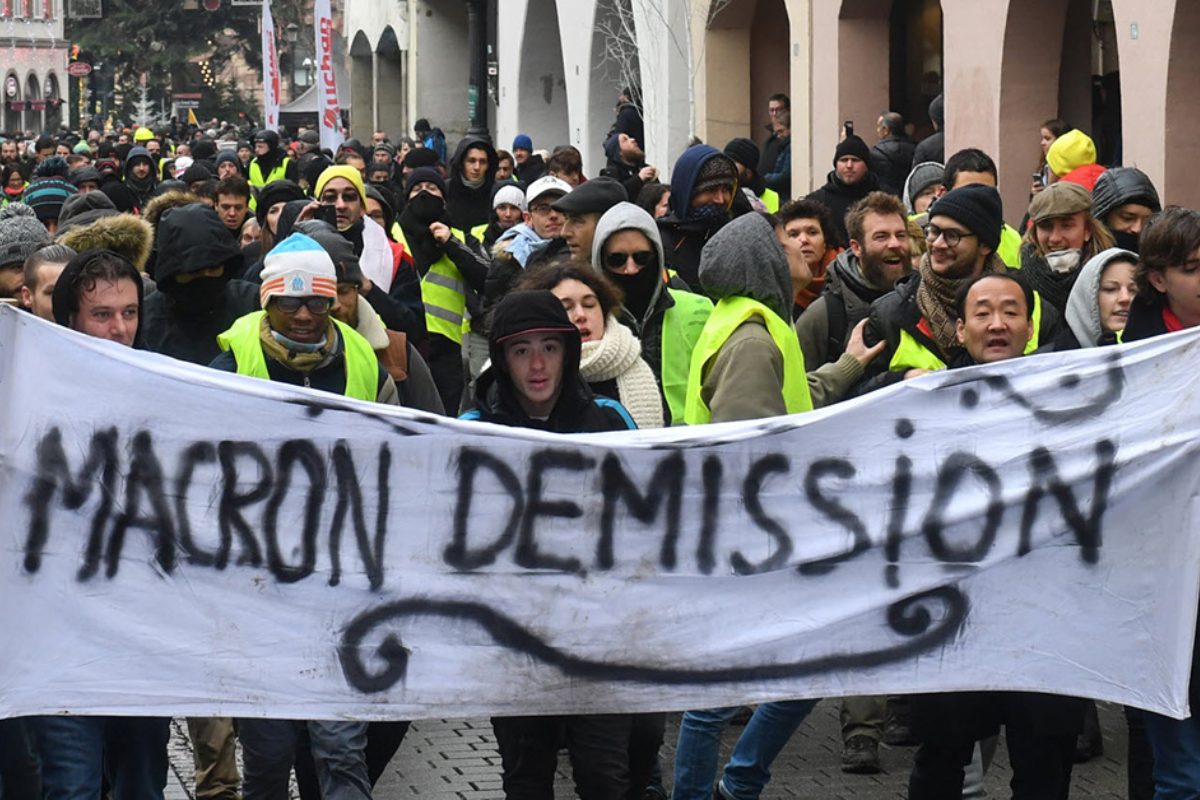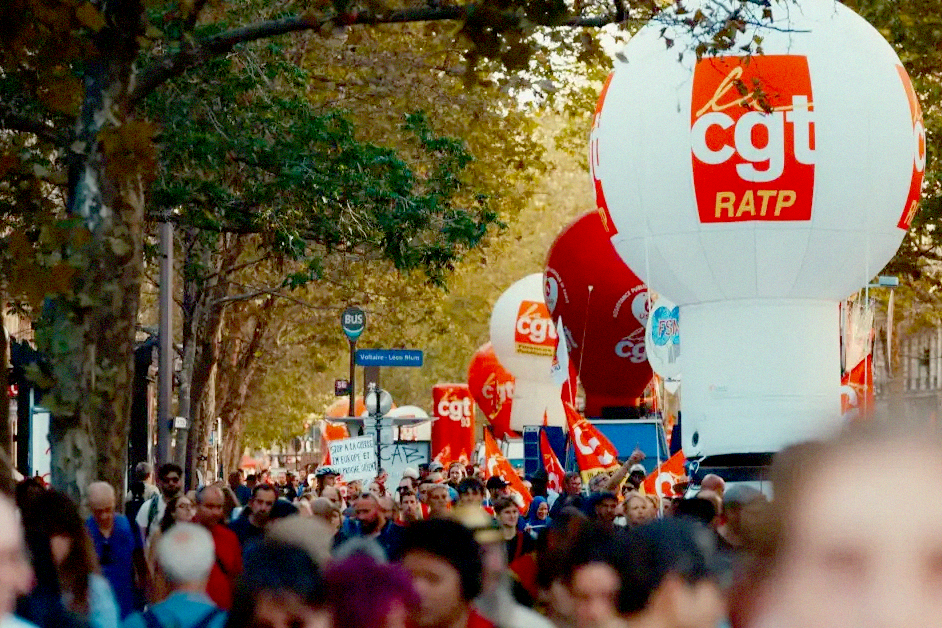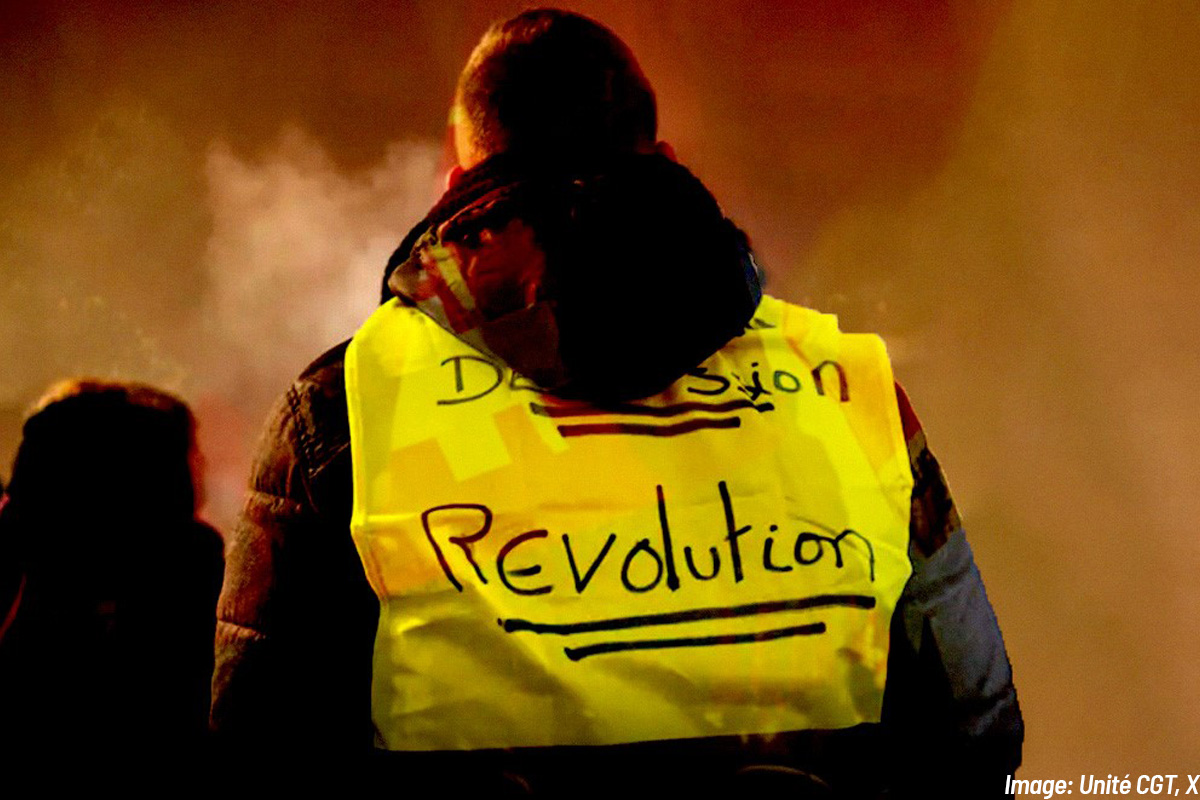French workers have demonstrated staggering resolve to continue their general strike against Macron’s pension ‘reforms’. New layers continue to enter the fight. Only a break with the system can provide a way forward.
The working class of France has continued to fight for almost two months. This is astonishing given the lack of leadership provided at the top of the labour movement. It demonstrates the depth of anger and discontent within French society.
Whilst the incredible struggle of the French rail workers has begun to ebb, new layers of workers are being drawn into the strike from other sectors.
We publish here two articles on the recent events: one from the French section of the IMT and another from In Defence of Marxism.
Enough is enough! French masses at boiling point
By Jérôme Métellus
The mobilisation that began on 5 December is now at a crossroads. The indefinite strike called by French rail workers is at an ebb, after over 40 days of exemplary struggle. This ebb fits perfectly into the government’s scheme. Since the month of November we have emphasised that: “If the rail workers’ strike remains isolated, the government will have one of two options: either it can make concessions contained to the isolated sections of workers on strike, or it can count on their exhaustion. In either case, the masses in general would lose.”
By mid-January, the government thought that its victory was assured. But since then we have witnessed a new push from different sectors. Militant actions have emerged from lawyers and sewage workers alike, accompanied by a spectrum of teachers, electricians, nurses, dockers, etc. Protest actions, strikes and local demonstrations have multiplied. The New Year announcements of ministers, deputies and other figureheads have been disrupted and often cancelled. With a loud outburst of defiance and daring struggle, workers have downed their uniforms and tools before those who embody power. The bosses have attempted to pass off in a friendly vein, but their authority has withered amidst the downed uniforms, robes and books.
This effervescence was confirmed in a rebound in numbers mobilised for the protests of 24 January. Has the movement entered a new upward phase, despite the ebb of the transport workers’ strike? This cannot be excluded, for a reason that we have already emphasised on several occasions: this movement is fueled by the general anger which has accumulated for a long time.
Rejection of a system
Beyond the onslaught of the pension system, the entire government’s programme has become massively rejected. We can clearly see it in the demands and slogans of the mobilised workers: the question of pensions obviously occupies a prominent place, but only among many other slogans that denounce all of the infernal mechanics of budget cuts, austerity, “restructuring of the economy” and successive counter-reforms, which have degraded working conditions to unbearable levels.
Within the working class, Macron is viewed favourably by fewer than 10 percent, according to the latest polls. He has thus accomplished the feat of beating François Hollande’s record, who had already beaten Sarkozy’s. It makes sense: the effects of the crisis are piling up. Macron adds his own personal touch: colossal arrogance.
Un petit peu de monde à Paris apparemment.#greve24janvier pic.twitter.com/X2Q7YNbPFJ
— Jean Hugon (@JeanHugon3) January 24, 2020
In this context, a movement against one (counter)-reform can serve as a catalyst for a much wider and more radical struggle. The government has feared it from the onset; in fact, that is the only scenario that could beat it into retreat. Unfortunately, the leadership of the unions on the frontlines – without even mentioning the professional capitulationists of the Laurent Berger type – have not tried to channel all of the potential power of the movement into the struggle. By strictly limiting the aim of the struggle to the withdrawal of the pension reform, the leadership of the CGT, FO and Solidaires have acted as a brake on the mobilisation of workers in the private sector, where a renewable strike entails particularly heavy sacrifices (loss of wages and risk of sanctions). These workers have all kinds of urgent, immediate problems, which the mere withdrawal of the pension reform would not solve.
To encourage the mobilisation of the private sector, which comprises the vast majority of wage-workers, the union leadership must go from the defensive and onto the offensive. They must aim not only for the withdrawal of the reform, but for a decisive break with the entire reactionary programme of the government. They must mobilise on the basis of progressive and radical demands. The claim of Philippe Martinez – that one may “negotiate” progressive measures with the government – does not hold water: Macron will never negotiate anything like this. A progressive programme will have to be imposed on the ruling class by another government, which means overthrowing the Macron government.
In March 1935, Leon Trotsky wrote about the situation in France, then in the throes of a deep economic and social crisis:
“Under present conditions, in order to force the capitalists to make important concessions, we must break their wills; this can be done only by a revolutionary offensive. But a revolutionary offensive, which opposes one class to another, cannot be developed solely under slogans of partial economic demands (…) The masses understand or feel that, under the conditions of the crisis and of unemployment, partial economic conflicts require unheard of sacrifices which will never be justified in any case by the results obtained. The masses wait for and demand other and more efficacious methods. Messrs. strategists, learn from the masses: they are guided by a sure revolutionary instinct.”
These few lines deserve to be pondered by all left-wing and union activists, because they shed light on a fundamental aspect of the current political and social situation.
Reform and revolution
In the press, on the radio and on television sets, the government’s henchmen sing praises of the “reformist” unions (CFDT, UNSA, etc.) and castigate the “troublesome” ones (CGT, Solidaires, etc.).
But what is a “reformist” union, according to their analytical framework? A union whose leaders support counter-reforms, social regression and austerity. Such classification as befalls Laurent Berger (CFDT); who dedicates his life to it.
The sleight of hand is obvious: counter-reform is rebranded as “reform”. As for those who oppose it, they are accused of conservative “immobility”. This terminology is worthless: it aims to confuse the minds of workers. Let us say things in the plain language of Marxism.
Incredible scenes in France as Firefighters clash with police as the strikes & protests continue against the Govt
We were told Macron’s Centrism was the best way forward. Seems that was not the casepic.twitter.com/s78e76EyNg
— The Pileus (@thepileus) January 28, 2020
Today, in France, the leadership of all workers’ unions are “reformist” in the Marxist sense of the term: they reject the idea of a socialist revolution and defend the prospect of a long series of progressive social reforms within the framework of capitalism. It is true, in fact, that the leadership of the CFDT mainly defends counter-reforms. But that is the logical outcome of reformism: its ultimate consequence. The leaders of the CFDT have completely adapted to capitalism; they consider it to be the only viable system. Hence, when the capitalists demand drastic counter-reforms because of the deep crisis in their system, Laurent Berger faithfully nods and steers away from reform without a fight, into the realm of counter-reform.
Does this mean that revolutionaries are opposed to reforms? Absolutely not. Lenin already explained it in 1913:
“Marxists recognise struggle for reforms, i.e., for measures that improve the conditions of the working people without destroying the power of the ruling class. At the same time, however, the Marxists wage a most resolute struggle against the reformists, who, directly or indirectly, restrict the aims and activities of the working class to the winning of reforms. Reformism is bourgeois deception of the workers, who, despite individual improvements, will always remain wage-slaves, as long as there is the domination of capital.”
Nowadays, owing to the deep crisis of capitalism, reformists are no longer able to even guarantee workers “isolated improvements” in their conditions. Either they play the game of counter-reforms (Berger); either they adopt a strictly defensive position (Martinez).
We may be answered: “This is wrong, because Martinez is asking the government to negotiate for a progressive pension reform”. Very well, but that is an absurdity. Macron rules for the French ruling class, which objectively needs drastic counter-reforms. It will only “negotiate” counter-reforms, that is, to impose them on workers – if possible with the help of Laurent Berger. Any other perspective is a lie that throws confusion in the face of the workers. We must tell them the truth: in the current context, that of a deep crisis of capitalism, only a break with this system – a socialist revolution – will open the prospect of a serious improvement in the living conditions of our class.
French strike passes 40th day as workers reject Macron’s manoeuvre
By Joe Attard
 The battle in France over Macron’s reactionary pension reform passed its 40th day on 13 January. A fourth interprofessional strike last Thursday and follow-up protests on the weekend brought hundreds of thousands onto the streets yet again, and further days of action have been declared up until 16 January.
The battle in France over Macron’s reactionary pension reform passed its 40th day on 13 January. A fourth interprofessional strike last Thursday and follow-up protests on the weekend brought hundreds of thousands onto the streets yet again, and further days of action have been declared up until 16 January.
In an attempt to break the united front of trade unions, the government has offered to temporarily suspend the proposed raise in the state retirement age from 62 to 64 (the so-called pivot age). This false concession is a trap that the CGT has rightly rejected, demanding the total revocation of the pension reform. But even this demand falls short. Macron has staked his political life on passing the pension reform and it will take a far greater mobilisation to beat him back. The only realistic strategy is to build for an all-out, continuous general strike involving the widest possible layers of the French working class and youth, setting the stage for a revolutionary struggle to bring down Macron’s rotten administration.
“We will continue!”
The mobilisation on 9 January was massive, with the CGT reporting 1.7m people on the streets – 370,000 in Paris alone. The turnout was smaller on the Saturday, with unions claiming 500,000 demonstrators across France and 150,000 in the capital. These numbers are perhaps exaggerated, but the ludicrous official figure (450,000 nationally on the 9th and 150,000 on the 11th) is nothing but wishful thinking on the part of the state. As attested by social media, there were hundreds of protests across the country, with big marches in Marseille, Toulouse, Nantes, Bordeaux, Lyon, Nantes, Clermont-Ferrand and elsewhere.
The mood on the Thursday demonstration was very radical, with a greater variety of workers on the streets, including rail workers with SNCF and the RATP, refinery workers, teachers, public sector employees, RTE energy workers, construction workers, librarians, lawyers – and more. Although there is some evidence of tiredness setting in, many people feel they have gone too far now to back down. This was clear from one of the central slogans on the marches: “on ira jusqu’au retrait!” (we will continue until it is withdrawn!)
Lawyers, firefighters, and even police forensics experts have thrown down their uniforms and joined the protests in France.
Now, tax collectors are throwing down the tax code and joining in the mass protest.
— Joshua Potash (@JoshuaPotash) January 25, 2020
Transport workers remain the vanguard of the movement. All but two Paris Métro lines (both of which are automated) were closed on the 9th, and there was a severely diminished service on other lines, in addition to buses, trams and RER trains. TER train services were reduced by 40 percent, and there were bus replacement services on many lines. The national rail service, SNCF, was also hit with cancellations and reduced services, as was the Eurostar.
Fatigue and loss of pay has understandably taken its toll on the transport workers, resulting in them gradually returning to work in dribs and drabs. However, they rallied for the 9th, when (according to the SNCF) five times as many train drivers were on strike as the day before, with a higher observation than the last interprofessional strike on 17 December (34 percent versus 33 percent). It is truly impressive that, 40 days into an all-out strike, the workers are able to draw on deeper reserves for an even-harder push.
Spine Tingling!
Thousands of people sing as they march to protest in #Paris.#greve9janvier#ViolencesPolicières#GiletsJaunes pic.twitter.com/e49jweoW45
— Ian56 (@Ian56789) January 9, 2020
White-collar workers are still in the fray. Around half the education workforce went on strike on the 9th, with 60 percent participation in the capital. Teachers’ action could be far stronger, but the main education union (FSU) is reluctant to call a continuous strike. Additionally, a lot of hospital workers (particularly nurses and nursing assistants) were visible on the marches. Furthermore, on 10 January, following the decision of a general assembly, medical interns went on strike across France, with 60 percent of the workforce picketing. The Paris Opera remains on strike, cancelling the inaugural performance of its new season, The Barber of Seville. The company reports it has lost €12.3 million to the strike so far. In one of the most dramatic images of the day, dozens of lawyers (whose special pension regimes are under threat from Macron’s reform) cast off their robes and threw them at the feet at the Minister of Justice during a press conference on the 9th.
Private sector workers remain a minority on the demonstrations. The notable exception is workers at France’s main refineries (which are owned by private companies like Total), who are participating actively in this struggle. General assemblies of refinery workers voted to harden their action, extending a planned 72-hour stoppage to 96 hours, although it is difficult to gauge the extent to which this was observed. Given the blackmail and threatened sanctions these workers face from the bosses, their courage is exemplary. Local CGT chapters have been taking steps to protect their members at the refineries from workplace sanctions, which has helped in giving them the political and moral strength to keep up the fight.
Again, the problem of leadership
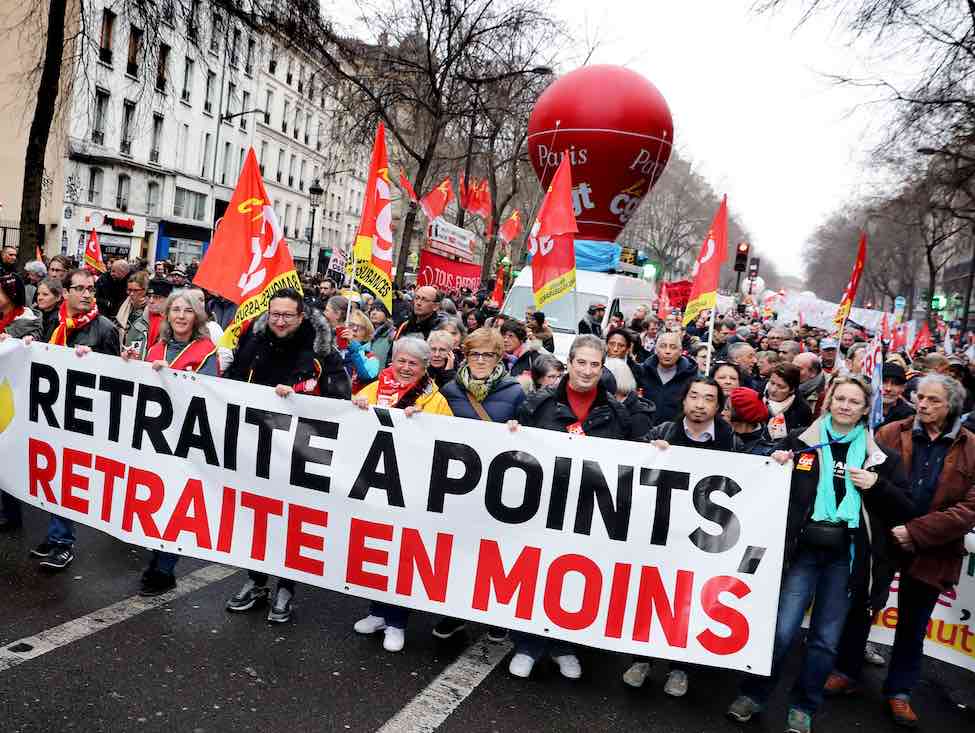 By contrast, the national strategy of the CGT towards winning over private sector workers remains extremely limited. Part of the reason they called a follow-up demonstration on Saturday was so that private sector workers could take part without having to lose pay or face reprisals from their bosses. But this kind of action is toothless, and no substitute to building the strike in private sector workplaces by politically explaining the need to get out as many workers as possible to combat Macron’s rotten policy. Moreover, it artificially inflates the level of private sector participation. While plenty of private sector workers are sympathetic with the strike, they aren’t going to risk sanctions and loss of pay unless they’re confident of victory – a confidence the CGT leadership is failing to instil.
By contrast, the national strategy of the CGT towards winning over private sector workers remains extremely limited. Part of the reason they called a follow-up demonstration on Saturday was so that private sector workers could take part without having to lose pay or face reprisals from their bosses. But this kind of action is toothless, and no substitute to building the strike in private sector workplaces by politically explaining the need to get out as many workers as possible to combat Macron’s rotten policy. Moreover, it artificially inflates the level of private sector participation. While plenty of private sector workers are sympathetic with the strike, they aren’t going to risk sanctions and loss of pay unless they’re confident of victory – a confidence the CGT leadership is failing to instil.
However, activists on the ground have been overcoming the limitations of their leadership to involve broader layers of private sector workers, to a certain extent. Notably, the main column in Paris on Thursday was led by a self-organised bloc of RATP and SNCF workers, both unionised and un-unionised. Transport workers have also apparently been reaching out to employees of the PSA Poissy Plant (which produces cars), some of whom were visible on the demonstrations. These are small steps, but they give a sense of what could be achieved if the CGT adopted a more courageous and determined national strategy.
The masses have also been driven forward by the whip of state repression. The police have become increasingly violent towards demonstrators. French prosecutors have launched an investigation into police violence after a video emerged on social media showing an officer firing an LBD riot control gun at a marcher on the 9th at point blank range, while other officers beat the rest of the crowd with batons. LBDs fire 40-millimeter rubber balls that can cause serious injury and even death if used at close quarters, and cost several gilets jaunes an eye in 2018. The police have dismissed the legal complaint, releasing a statement claiming its officers were confronted by “hostile and threatening groups”, and therefore used proportionate force.
?? [FLASH] – Une vidéo filmée à #Paris, aujourd’hui, montre qu’un policier a tiré à bout portant sur un manifestant contre la réforme des #retraites (à 12s).
Une nouvelle violence policière. #greve9janvier #manifestation#GiletsJaunes#GreveGenerale
? (@laurentbigotfr) pic.twitter.com/0KEFYWvLui— La Plume Libre (@LPLdirect) January 9, 2020
The state forces are playing with fire: it was the heavy-handed approach of the police that helped turn the gilets jaunes into an insurrectionary movement. The unions could certainly tap into the mood of anger and intensifying hatred towards the establishment, and build for a major confrontation between the workers and the government. But for now, they are keeping the struggle within safe channels.
False concessions
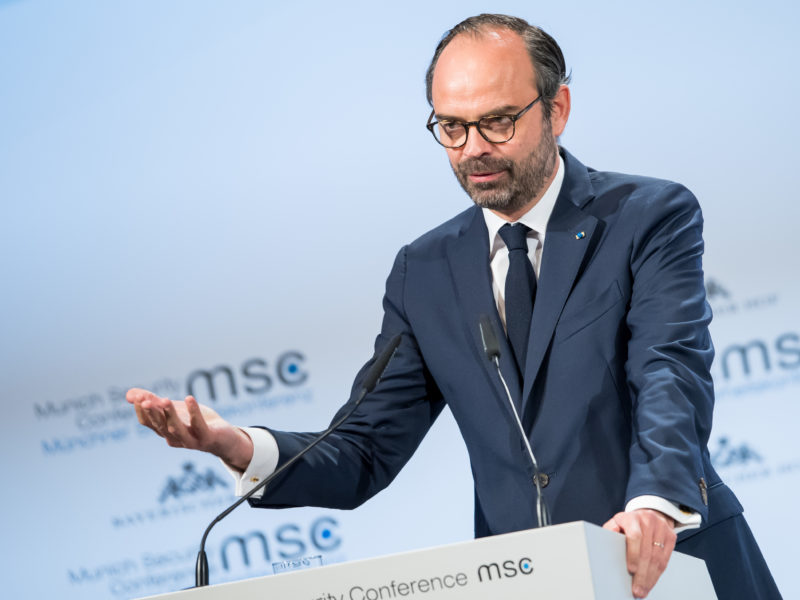 It was no accident that Prime Minister Édouard Philippe announced the removal of the “pivot age” (where workers must work an additional two years from 62 to 64 to claim their full pension) on Saturday. President Macron’s self-described “constructive compromise” was an attempt to cut across the demonstration. However, in this regard, he failed. After the statement was released, the demonstrators immediately renewed their chant to fight on until the pension reform is withdrawn. The workers have seen these tricks before, in the various phony “concessions” Macron promised to defuse the gilets jaunes movement. The special pension regimes are still on the chopping block, and Macron still intends to raise the official retirement age eventually. This is purely a manoeuvre, and the workers know it.
It was no accident that Prime Minister Édouard Philippe announced the removal of the “pivot age” (where workers must work an additional two years from 62 to 64 to claim their full pension) on Saturday. President Macron’s self-described “constructive compromise” was an attempt to cut across the demonstration. However, in this regard, he failed. After the statement was released, the demonstrators immediately renewed their chant to fight on until the pension reform is withdrawn. The workers have seen these tricks before, in the various phony “concessions” Macron promised to defuse the gilets jaunes movement. The special pension regimes are still on the chopping block, and Macron still intends to raise the official retirement age eventually. This is purely a manoeuvre, and the workers know it.
But Macron doesn’t really intend to win over the workers in struggle, he is trying to get the softer union leaderships (CFTD and UNSA) to withdraw their forces. They had previously signalled that cancellation of the pivot age, which only affects older workers, would be sufficient for them to pull back. Indeed, Laurent Berger, secretary general of the CFDT, hailed the government’s concession as “a victory” and celebrated Macron’s “willingness to compromise.” UNSA also welcomed the announcement.
However, the increasing class consciousness of their rank-and-file is clearly having an effect on these more-conservative unions. The fact that CFDT and UNSA are still on strike reflects pressure from below. UNSA even released a somewhat critical statement that, while it would return to the negotiating table, Macron’s announcements “do not meet the expectations of either RATP employees or UNSA-RATP”.
Macron’s other objective is to weaken public sympathy for the strike, by signalling his willingness to compromise, while making the workers look like intractable hardliners. By emphasising the special pension regimes, he is trying to convince the masses that this fight is led by “privileged” layers of the workforce, a message trumpeted by the establishment media.
Despite these efforts, support for the strike is holding at around 60 percent. Furthermore, millions of Euros have been donated to the national CGT fighting fund, while local “kitties” organised by workers have also seen generous donations from members of the public. Fabrice Archet, a 46-year-old train driver from the RER B line, which connects Paris with France’s international airports, said:
“It’s not necessarily the wealthy who give to our kitty – it’s often students and people who are struggling themselves. We need to show the government that we won’t give up, that we’re here in the street and that he [Macron] needs to listen to us.”
In contrast to the attitude of the union tops, who emphasise the pension reform in isolation, the workers’ determination, and these displays of sacrifice and solidarity from the public, show an appetite for a broader battle against Macron’s entire reactionary government of the rich. People understand that the pension reform is merely part of a wider series of attacks on working people. As Marie Sabrina, a 34-year-old teacher from Seine Saint-Denis, said: “It’s been a month since we’ve been protesting, and [Macron’s] not listening to us. He needs to listen to the street… He’s a banker. He just cares about finance and money – that he gives to his rich friends.”
These comments were echoed by André Villanueva, an Air France ground worker at Charles de Gaulle airport and CGT member, who said: “This is about people’s futures. If you’ve got a lot of money you’ll always be able to get health treatment, go on holiday and retire comfortably. This is about protecting the majority of people who haven’t and who work hard for a basic retirement.” Chantal Sevens, 67, a retired administrator from a private health company, added: “People are worried that this reform will in fact simply benefit the big groups running private pension funds. It’s about capitalism. It feels like the very principle of our social security system is under threat.”
Extend the strike, fight to the finish
The CGT rightly rejected Macron’s phony compromise as a “smokescreen”, as did the inter-union federation stationed at the union headquarters of FO, insisting in a statement that they would not stop until the pension reform was scrapped in full. However, the union leaderships’ strategy going forward leaves a lot to be desired.
They announced three days of “strikes and interprofessional convergence” from 14-16 January, culminating in a “massive inter-professional mobilisation of strikes and demonstrations” on the 16th. However, they were extremely vague about the nature of these days of action, stating the details of the interprofessional strike on the 16th would be decided at an inter-union meeting on the 15th and announced afterwards, giving the workers no time to rally their forces or prepare.
This is a continuation of the union tops’ approach of keeping workers in the dark, and treating their struggle like a tap that can be turned off and on to put pressure on Macron. In the meantime, CGT general secretary Philippe Martinez will be attending a “financing conference” to negotiate with representatives from the government. Evidently, nothing has changed in the thinking of the bureaucrats. They have no faith in the workers, their attitude is still that the masses exist only to provide leverage for closed-door negotiations with the state.
1 year + 9 weeks of massive protests in France.
?️ || ‘Lawyers in #Lyon protest against Macron government’ (#Greve13Janvier)
Mainstream media will never show you this video.
We are the media now.pic.twitter.com/MxocuoHwZw— Oh boy what a shot (@ohboywhatashot) January 13, 2020
This is a losing strategy. The impact of passively calling for days of action will reap diminishing returns. None of the mobilisations thus far have been strong enough to seriously threaten the government. Macron can ride them out. It should be noted that the size of the demonstrations do not necessarily reflect the scale of the strike. In truth, the energy of the cheminots, who have now lost a month-and-a-half of pay, is not unlimited. The cracks are beginning to show. Even on the 9th, four out of five of TGV high speed services and 70 percent of Ouigo services were running as usual. Moreover, two-thirds of Transilien trains in the greater Paris region and one third of Intercité routes were running. This is a far-cry from the near-total shutdown of public transport at the beginning of December.
Despite the slogan “we will continue until it is withdrawn”, it is not so much the length of the strike that will prove decisive but its breadth. The majority of workers in France are in the private sector. These layers will not risk lost pay and sanctions unless they see a plan for victory. Even in the public sector, only a minority is on strike. If the cheminots are isolated, they will be defeated, in spite of their courage and sacrifice. It is the duty of the union federations to properly build for a national, continuous strike with the aim of bringing French society to a standstill. This, and only this, can ensure victory.

